Some of you may have been on my Sultanate Delhi Tour, in which we discuss the evolution of domes and squinches. This tour visits the 1st First City of Delhi in the Qutb complex and Mehrauli area. We spend over an hour in the Qutb complex, where, as in Rome, we can unearth layers of history. We learn about early Hindu architecture and how this has fused with Muslim architecture in some parts of the site, while other parts have pure Muslim architecture from different time periods, right up to the Shah Jahan Mughal period. Do you remember seeing a Hindu Masjid with me?
Before the first successful Muslim invasion, in 1192 A.D., the Ajmer-Rajput kings had set up their base in the Mehrauli area, where they built intricately carved Hindu and Jain temples. When Muhammad Ghori’s Muslim armies arrived, they needed a mosque quickly and built with what was in hand – namely Hindu temples. That’s why you see Hindu features incorporated into the mosque – just like the Adai-din-ka Jhopra in Ajmer, another site conquered by Ghori’s troops.
The mention of jinns in the Quran meant that they were taken seriously in Islam. Michael W. Dols notes that, “Even the legal status of the jinn was worked out by medieval Muslim jurists in all respects and in astonishing detail especially with regard to marriage between jinn and human beings.”
A guide to domes
At one spot in the Qutb complex, we can see domes from different periods: a Hindu dome, an early Muslim one, and a Lodhi period one. For temple architecture, the Hindus used conical domes with post-and-lintel or trabeate construction – a building system with several pillars held with strong horizontal elements and large spaces in between. Arches, initially false, and later true, with keystones, were introduced to Hindu artisans by the Muslims. Early Muslim domes were flat and shallow (Alai Darwaza 1310), but by the Lodhi period we saw more rounded shapes, as Hindu artisans began to play skilfully with squinches to position the dome on a square structure. Humayun’s Tomb (early Mughal), in Delhi, uses, for the first time, a double dome with a full semicircle and pointed arches.
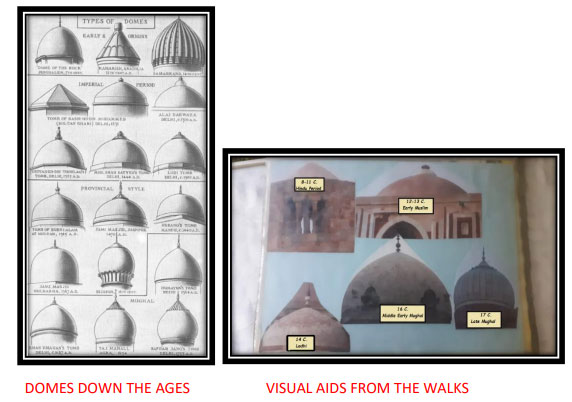
By doing this walk, you’ll also be able to identify a late Mughal dome, from Emperor Shah Jahan’s time. This is an onion-shaped or bulbous (piyazi) dome with cusped arches, the type you see on the Jama Masjid in Delhi and the Taj Mahal in Agra. On my walks, every time I’ve introduced the shapes of domes and said there is ‘no need to cram dates’, people appreciate it, as it brings history to life and helps you discover fascinating aspects for yourself. I’ve done this walk innumerable times, and everyone just loves it.
What is a squinch? I can see your eyes glowing just like the people on the walk!
Squinches are the secret to dome construction because they can turn a square shape into a circle to fit a dome base. Shapes of squinches can vary, as you see in my visual aid. On the walk, you’ll find the squinch in the Alai Darwaza is very different from the Lodhi one
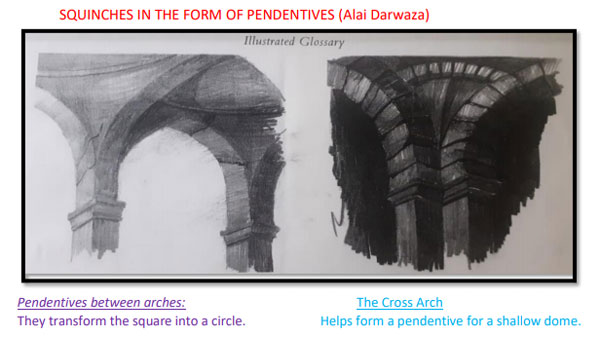
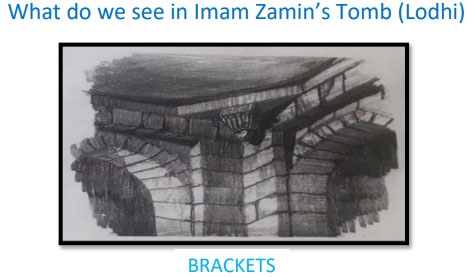

Point to reflect on: The dome of Alai Darwaza was shallow and flat as it had squinches in one level, while in Imam Zamin’s Tomb there were three levels providing a more rounder shape.
Other points of interest
In Imam Zamin’s Tomb we learn interesting facts. Remember the Mihrab or Qibla wall? – the decorative niche in a mosque or tomb giving the direction of prayer. How about the markings on the tombstone on the graves? – kalam, or pen (or inkpot), for a man and a takhti, or writing board, for a woman. Interestingly, for me, in Turkey the shrine of Rumi, the Sufi poet, and other tombs are capped with huge turbans, which are symbolic of the spiritual authority of Sufi teachers.

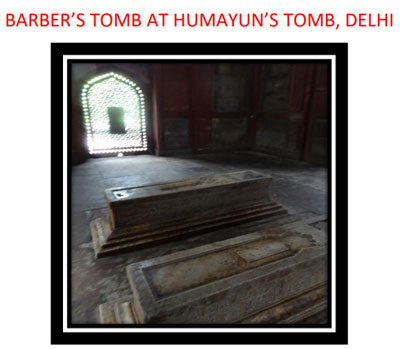
Even the cenotaphs of Emperor Jahangir, in Lahore, and Emperor Babur, in Kabul, follow the same rules of tomb stone decoration. Only oral history tells us whose grave it is, as there is no name and no inscription except Quranic verses. It would be interesting to see the tombs of the Ottoman and other famous Muslim dynasties across the world; or was it just the Mughals who created paradise gardens for their burials? Can any readers comment on this?
Muqarnas at Qutb
Before I conclude, let’s talk about the Qutb Minar, the tallest sandstone tower in India, unique in the whole world. On the walk, people comment that the muqarna decorations we see here remind them of the Alhambra in Spain.
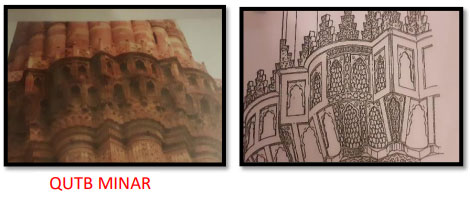

Qutb Minar has muqarnas, the “honeycomb”, or “stalactite”, vaults, significant in Islamic architecture, along with calligraphic inscriptions, as opposed to the Iron Pillar from the 4th century of the Gupta period, which has Sanskrit inscriptions. Also, the Qutb Minar does not lean like the Leaning Tower of Pisa. Both were built in 1192, but the Qutb was built on a solid rubble foundation, while the Pisa tower stands on a sandy foundation.
Friends, I invite you to continue the walk on a virtual online gallery. Please click on the link below.
https://drive.google.com/open?id=1mK8coB9Z9ojbkEp3g7cpT-2vEa5CFyY0
Please do share this signature walk with others, who may be keen to learn the secrets of domes, squinches and other architectural features. If you have visited this site with Surekha, or on your own, please share your memories.
I have done this fascinating walk with Surekha several times, and each time I learn more about the stories written in the stones of this unique site. Surekha also does a Qutb walk for mom’s dad’s and kids, a shorter version with photos at the end for them to recap. I did this with my daughter and niece and they said that history had never been so much fun! Catriona Child, Delhi
Heritage walks with Surekha Narain. Contact details, +919811330098,
www.delhimetrowalks.com, surekha@delhimetrowalks.com or walks@delhimetrowalks.com.
